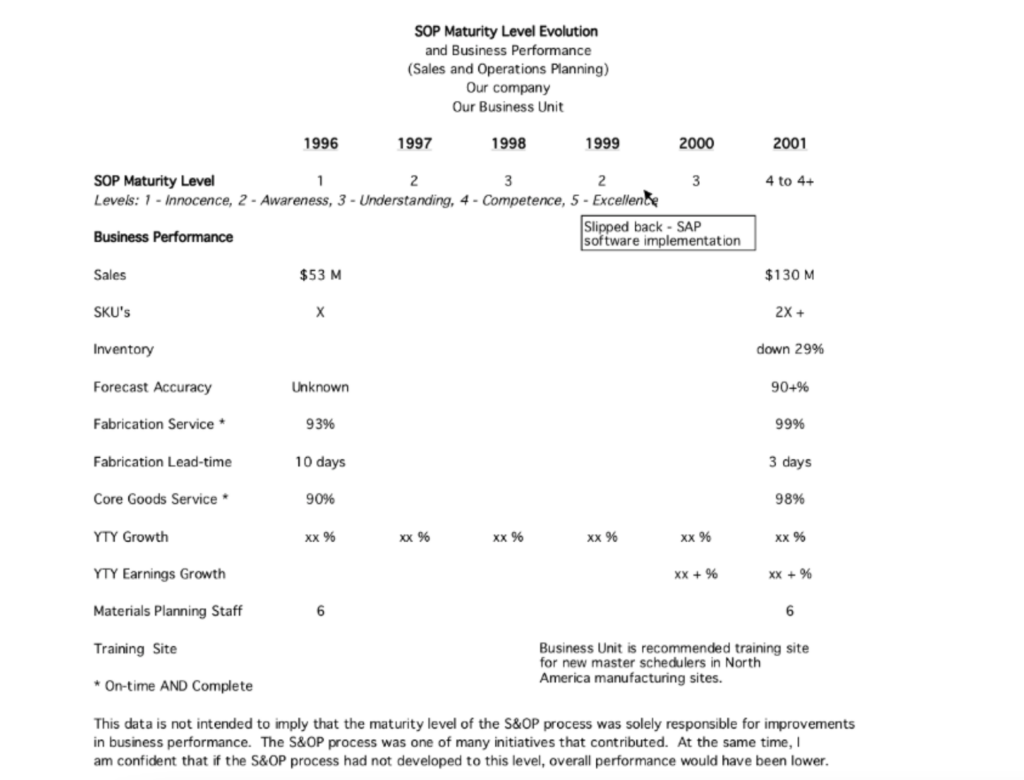You Can’t Prove What You Don’t Measure
Recently, we have been exploring the concept and components of an outcomes-based SIOP maturity model. The work is based on years of sales, inventory, and operations planning (SIOP) and End-to-End Planning with what seems like countless clients, most of which are smaller in size, are lower in their SIOP maturity stage, and are often self-taught before we get involved to energize or re-energize and accelerate their journey.
A thought contributor that we’ve been in contact with for years decided to provide us with some of his personal experience regarding outcomes-focused SIOP metrics from across a six-year SIOP journey with a real-world organization. We’re thrilled to share his insights as part of our ongoing SIOP maturity series.
P.S. — This is part four of our ongoing SIOP series. If you haven’t yet read the first few posts in this series, be sure to start with the introductory part one, an explanation of the maturity stages in part two, and the metrics that this new approach considers in part three.
Exploring a Real-World SIOP Tracking Scenario
The organization below understands the importance of SIOP tracking and the impact it can make. While the data is itself older, the message remains regardless: you can’t show value and progress if you’re not tracking the data. Remember, SIOP maturity is a longer-term process that involves numerous functions and steps. It’s going to take time. Data must be captured and monitored as time passes in order to understand progress.
Before you explore the image and data further down, here is a snapshot of the results of SIOP tracking over a six-year period:
- Revenue growth of $53M to $130M (a 6 year 16% CAGR)
- On-Time and Complete metrics of 93% to 99% respectively
- Keep in mind, this was achieved during the same time as the growth rate
- Reduced Cycle/Lead Time from 10 days to 3 days
- And no increase in planning staff

A naysayer to the above data and results would say that the dates are 20 years ago. One might argue that they had other initiatives going on, and of course they did. What company doesn’t? Not all of a company’s initiatives are successful, and the unsuccessful initiatives will stall or drag down outcome performance. Others might argue that it was a small company, but we all know that smaller companies generally have less technology and detailed instilled standard operating procedures to lean on.
All of that is irrelevant — the point is the tracking.
Start SIOP Tracking Now
The key point of providing this information is that it is important to start SIOP tracking now, if you haven’t already done so. As you experience success thanks to outcomes-focused tracking and your career grows, be sure to hand off SIOP tracking measures and metrics to the next person to ensure the foundation you’ve built continues and your business benefits from the process.
There’s more to come with our SIOP maturity series, to be sure to follow along here and on LinkedIn.




















